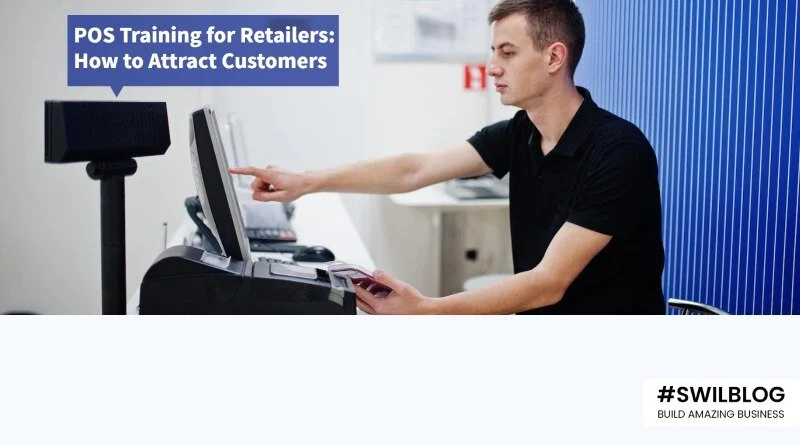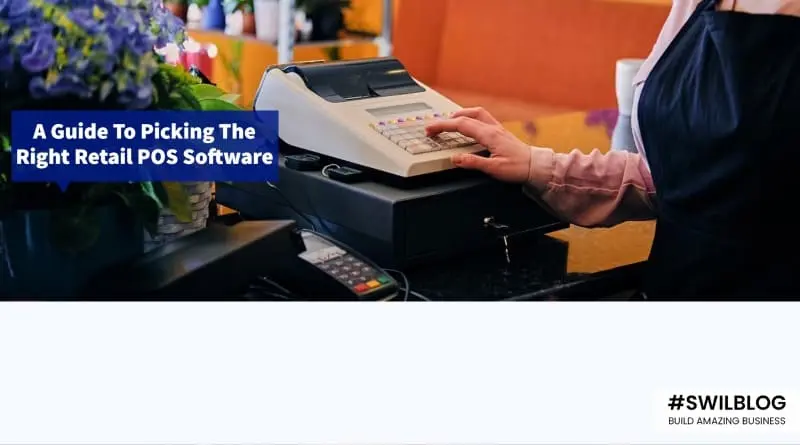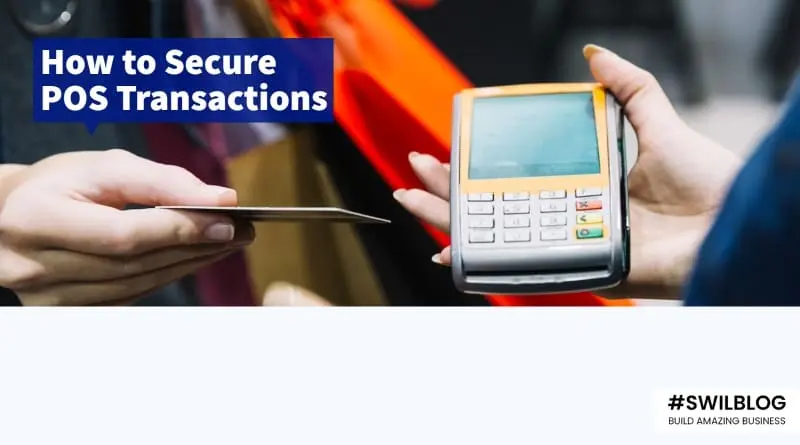Introduction:
One of the most important roles in your store is that of the cashier. They speak with customers just before they check out; thus, their influence could affect how effectively your store succeeds. While an uneducated staff could cost you precious customers, a well-trained cashier can increase sales.
Because of this, while recruiting new employees, you must conduct a thorough cashier training program. Without the training, your staff would be left on their own and could destroy your company.
Explore our entire cashier training guide by reading on!
Article Content-
- Importance of cashier
- The Retailer’s guide to Cashier Training: Plans & Suggestions
- Suggestions for Better Customer Service
- Advice on Checking Out
- Suggestion for Increasing Sales
- Conclusion
Importance of cashier
The cashier position is essential to retail businesses. Even if you have the best POS system, having a well-trained cashier has a major impact on your organization. Here’s why.
- As part of the sales procedure, cashiers manage the financial transactions. Therefore, it affects the store’s revenue if POS transactions aren’t properly handled.
- Customer retention is severely influenced by cashiers. A cashier creates a strong impression that may help convince customers to visit again because they are the last person they interact with before leaving the store.
- Cashiers ensure security. They have to deal with a wide variety of customers, some of whom are immoral people. They might try to use a credit card that has been stolen to make a costly purchase. By taking measures like verifying identity and credit card signatures, cashiers can identify these circumstances.
The Retailer’s guide to Cashier Training: Plans & Suggestions
What to Include in Your Training Plan
Whatever method you use for cashier training, be sure you cover the following points.
1. Store regulations:
An employee needs to be familiar with your company’s policies before they work behind the counter.
Things to cover:
- Opening and Closing: How do your cashier’s clock in and out? How do they manage before the store closed? Who activates the alarm and locks the door?
- Retail Displays: What should your displays look like? Who maintains the displays clean and organized? Are clothes arranged properly?
- Uniform: Do you have a dress code at your store? Are there limitations on earrings or hairstyles?
- Pecking order: Who is in full control and what are their duties? Who is the person to reach both during the day and at night?
- Emergency protocols: What happens in case of an emergency? Do you have a security alarm in your store? What is your egress strategy?
You should provide a guidebook to your employees after training. Keep a copy of your standard operating procedures (SOP) on hand at the cash register as well to make it easier for the cashiers to obtain answers to frequently asked queries.
2. Marketing strategy
The identity and values of your store are covered in the following phase of the cashier training program. Since cashiers are the public face of your company, you want to ensure that they portray it appropriately.
First, make sure to build the corporate culture that will guide all of your activities. These are ideas that you want your cashiers to absorb and abide by. They will eventually react to circumstances naturally and spontaneously.
The next thing you should look over your messaging and make sure your staff is capable of handling any interactions. They must be aware of when and what to say.
Do you have any trademark responses? Employees at ABC Company, for instance, use “My pleasure” rather than “You’re welcome.”
3. Sales and customer support
You can start evaluating general skills once your staff members are familiar with the policies and goals of your business. Cashiers need to know how to create a pleasant environment and promote products because they interact with customers the majority of the time.
Common customer support topics include:
- Approach: Make sure your staff members have a positive attitude that isn’t overwhelming. Customers should be comfortable approaching you for assistance.
- Greetings: Most visitors appreciate being greeted when they enter a store. Simple greeting of “Hello! “Let me know if there’s any concern!” is effective.
- Handling of conflicts: How will your staff deal with irate clients? Test their ability to control a situation and their knowledge of when to involve administration in complaints.
Some sales topics include
- Up-selling
- Cross-selling
- Urgency
4. Handling cash and working with the POS
Nearly every cash that enters your firm is handled by cashiers. You could experience revenue loss without even being aware of it if they make a mistake with the count or the money. You can prevent occurrences of shrinkage like this with the proper cashier training session.
First, make sure your staff members are good at handling money. They must be able to count fast and easily make a change. Most importantly, your cashiers must be knowledgeable about how to identify fake money. A bill marker or Bright light can be placed at your checkout counter to assist customers.
Second, each cashier must be knowledgeable about the point-of-sale software. The most crucial element of any store is your retail point of sale. The system not only records every transaction you make, but it also keeps track of your inventory, monitors employee time, and generates crucial financial reports.
All of these topics need not be covered in cashier training, but the following ones should:
- Calling in orders
- Receiving payment
- Implementing abatement
- Balancing the cash collection
Suggestions:
1. Suggestions for Better Customer Service:
Face-to-face interactions are essential to the onsite purchasing experience. Customer service will show the worth of your store and assist your customers in finding what they need.
Approach the customer with friendliness
Consumers frequently seek advice from experts and request suggestions. Instead of presenting the most expensive products, make recommendations for products that will best suit their way of life.
Maintain your composure
Although clients want you to be helpful, avoid becoming too cozy. One careless word might anger a customer and lose you a purchase.
Show your individuality
Customers prefer interpersonal interaction, not dull communication. If doing so will assist you to build relations, don’t be hesitant to share personal information.
Maintain your calmness
Take a moment to calm yourself if a client shouts at you or threatens you. There’s a chance the consumer is dissatisfied, so don’t quarrel back.
Pay attention
Customers frequently have desires. Try to listen to the consumer, even if they are shouting and angry, to figure out exactly what they need.
Concentrate on solutions
Consider what course of action will properly suit the circumstance, whatever it may be. Never say “I don’t know” to conclude a conversation. Ask management for assistance if necessary.
2. Advice on Checking Out:
The checkout procedure ought to be quick and easy. Cashiers must make sure that consumers desire to visit again
Raise inquiries
Ensure the customer is satisfied and has found what they were looking for.
Identify scams
Fraud occurs, so keep an eye out for common frauds like switching out invoices, altering price tags, and using credit cards that have been stolen.
Describe your loyalty scheme
Ask if the customer is a member of your rewards program and inform them of the potential savings and benefits of joining.
3. Suggestion for Increasing Sales:
A simple calculation is used. The more products you sell, the more money you make. Although not all transactions may be made by your cashiers, it will benefit if they have a deep understanding of retail sales techniques.
Find out what the customer needs
You must be able to solve problems. Recognize what customers are seeking, even if they are not aware of it.
Promote touching
According to studies, people are more inclined to purchase a product after touching it because they can see themselves possessing it.
Close the deal
Make the transaction as soon as the consumer appears to like the product. Encourage them to purchase it right away and offer to bring it to the checkout counter for them.
Conclusion
You may automate operations, streamline management, and concentrate on growth with the appropriate POS system. You can also consider SWIL’s POS software which provides a full point-of-sale solution. For multi-store businesses, it is a potent software package that automates the POS procedure and gives centralized control. Still, SWIL software has many additional features. To know more about SWIL’s POS software and get a free demo, check this. Thanks for reading!








